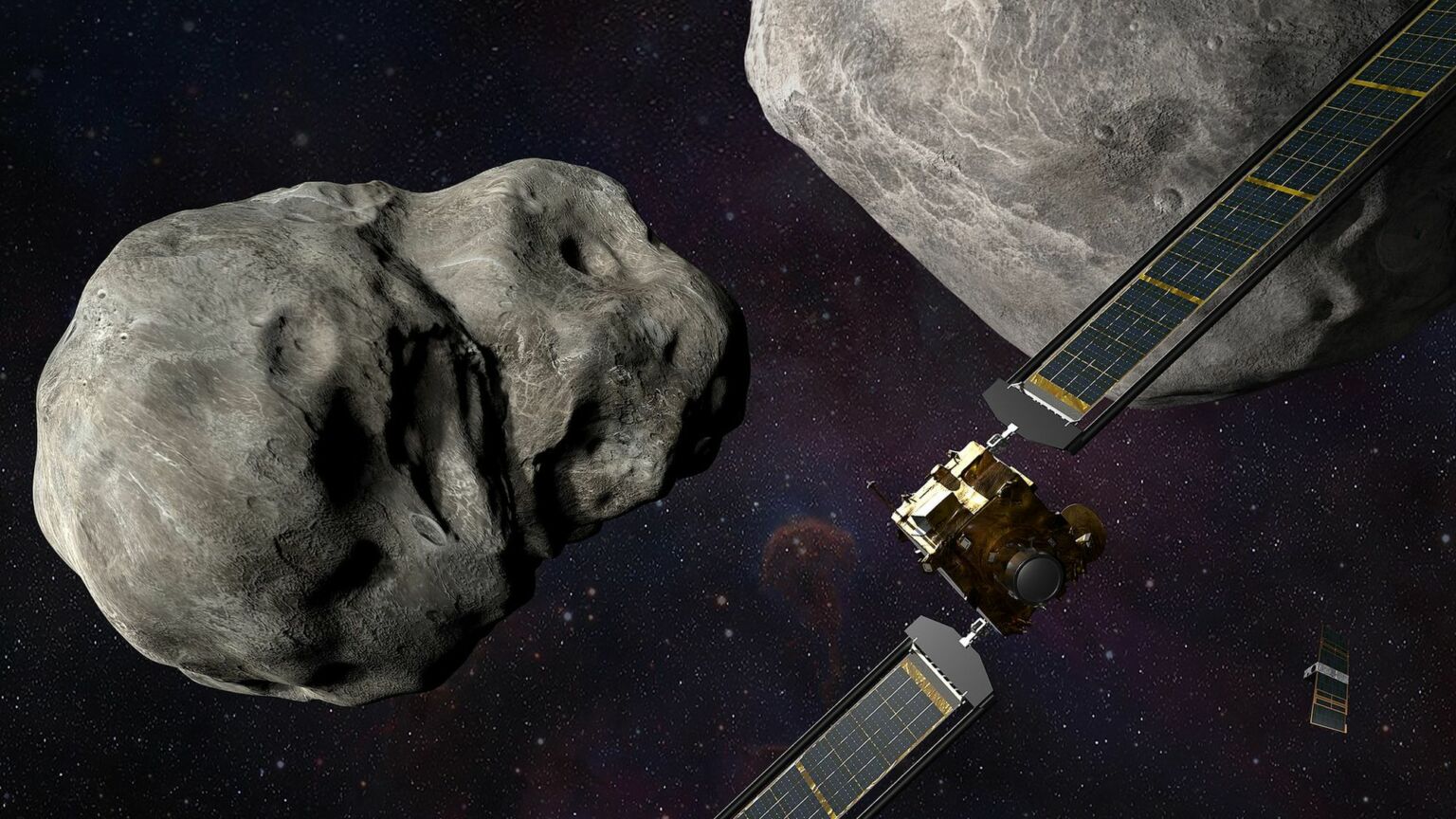NASA’s DART: science fiction has become reality
We could soon be able to save the Earth from incoming asteroids.

Want to read spiked ad-free? Become a spiked supporter.
The destruction of a multimillion-dollar spacecraft is not normally something to celebrate. But the crashing of NASA’s Double Asteroid Redirection Test (DART) spacecraft into an asteroid is an important exception.
On Monday, NASA announced that DART had collided with Dimorphos, a small body just 160 metres in diameter, which orbits a larger asteroid called Didymos, 6.8million miles from Earth. This deliberate collision of a car-sized spacecraft with an asteroid – the equivalent of a golf-cart travelling at 15,000 miles an hour smashing into the side of a football stadium – is a hugely impressive technical achievement. It is the first step towards developing the means to divert an asteroid away from a collision course with Earth.
This all might seem unnecessary, especially given that there are no known large asteroids that have a significant chance of hitting Earth in the next century. Yet, at the same time, it is important to note that the threat is not imaginary – despite being the subject of several Hollywood blockbusters. After all, the dinosaurs were likely wiped out by the impact of an asteroid hitting Earth 65million years ago. As MIT’s Technology Review points out: ‘Humans are, understandably, keen to avoid the [dinosaurs’] fate.’
Researchers believe that DART could have shortened Dimorphos’ orbit around Didymos by one per cent – that is, by about 10 minutes. This would be enough to make a significant difference to the path on which the asteroid travels. And it could therefore show how we might be able to deflect an asteroid heading towards Earth.
Scientists will not know the full picture for another four years, when the European Space Agency launches its Hera mission. This mission will investigate the impact of DART on Dimorphos’ orbit, the diameter and depth of the DART crater, and the interior structure and composition of Dimorphos. This should give us a better understanding of what it takes to move an asteroid.
In the meantime, ground-based telescopes, alongside the Hubble and James Webb space telescopes, will follow what happens next, and watch for changes in Dimorphos’ orbit.
This investment in planetary defence represents an impressive commitment to long-term thinking. It’s no understatement to say that what NASA and the European Space Agency are doing right now could hugely benefit people for centuries to come. It should be seen as part of humanity’s rational and conscious attempt to exert an ever greater degree of mastery over nature. And it will allow us to plan more rigorously for the future.
Patrick Michel, a planetary scientist at the French National Centre for Scientific Research and the principal investigator of the Hera mission, captured the scientifically adventurous spirit of the whole enterprise best. ‘It’s very exciting because anything could have happened’, he said after DART’s successful impact.
We don’t know how this will play out. But for Michel, and others involved in the DART and Hera missions, this uncertainty is an opportunity, not a threat. The missions are a chance to experiment and take risks, deep in space. And, through this process, we can potentially develop knowledge that will be of huge benefit to future generations.
All this represents a welcome riposte to the fatalism that dominates our historical moment. These scientists are not waiting passively for the future to happen. They are trying to exert some control over it in the here and now. And that is surely something worth celebrating.
Norman Lewis is a writer and managing director of Futures Diagnosis.
Picture by Steve Jurvetson, published under a creative-commons licence.
Who funds spiked? You do
We are funded by you. And in this era of cancel culture and advertiser boycotts, we rely on your donations more than ever. Seventy per cent of our revenue comes from our readers’ donations – the vast majority giving just £5 per month. If you make a regular donation – of £5 a month or £50 a year – you can become a and enjoy:
–Ad-free reading
–Exclusive events
–Access to our comments section
It’s the best way to keep spiked going – and growing. Thank you!








Comments
Want to join the conversation?
Only spiked supporters and patrons, who donate regularly to us, can comment on our articles.